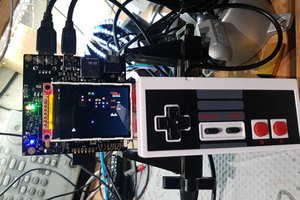PCB is laid out according to the Adafruit Feather spec. The idea is to make it manufacture-able. It could be sold as a finished board minus the headers, RF connector and the radio module. All of those parts are easily hand solder-able.
The radio module is by Dorji and is the DRF1262T. It's FCC certified and is available on Tindie. The module is based on the SX1262.
The board implements I2C, SPI, UART pins. Implements 4 GPIO (one is connected to the SPI hardware NSS pin). Implements 3 analog pins, one is a DAC pin. The STM32L073-SX1262 combination is an out of the box supported configuration by the Semtech LoRaWAN reference implementation. Has hardware support for the hard secure element. Includes native USB with ESD protection and common-mode filtering. Includes an efficient DC/DC buck boost based on the TPS63001 capable of supplying ~300mA@3.3V. Includes the 2x5 0.05" (1.27mm) Cortex standard SWD connector. Only implements SWDIO, SWDCLK and NRST (SWO is not supported on Cortex-M0+).
PCB was designed to be manufactured from the start. Parts are based on the JLCPCB SMT program. You can (currently) get the board assembled completely except for the connectors (JLC has no connectors in its SMT program) and a few of the parts that JLC was either out of, or didn't include in the program. Those parts and their placement were considered so it is possible that they can be hand soldered. The radio module is the only bottom side component which is easily hand solder-able. The schematic includes Digikey part numbers for all the parts as well.
The GitHub repo contains all the hardware files to manufacture the board including BOM and CPL files, so you could, in theory, send these off to a PCB house and get the boards made on your own.
I've also put together an STM32CubeMX project file that is compatible with the board if you want to roll your own project. This includes all the pin definitions that match up to the hardware. Those pin definitions were carefully selected to match the default LoRaMac-node firmware pins.
 Andy
Andy




 Sorry for my crappy photography skills. JLC doesn't have any connectors in their SMT assembly library which is strange, so they aren't assembled. The three user buttons were supposed to be assembled, but that was an error on my part. I did not select a part on the BOM selection step of the process. Oh well, Digikey to the rescue. The rest of the parts were either not in stock or not available for assembly. Time to get out my iron!
Sorry for my crappy photography skills. JLC doesn't have any connectors in their SMT assembly library which is strange, so they aren't assembled. The three user buttons were supposed to be assembled, but that was an error on my part. I did not select a part on the BOM selection step of the process. Oh well, Digikey to the rescue. The rest of the parts were either not in stock or not available for assembly. Time to get out my iron!






 charliex
charliex
 Jeremy
Jeremy
 Mastro Gippo
Mastro Gippo
 Nicolò
Nicolò
This is a really nice project, well done. Is your latest rev design working well? If you'd like to learn how to create visualizations with Grafana, please let me know, I just recently started testing the MQTT integration from The Things Network with Telegraf+InfluxDB+Grafana.